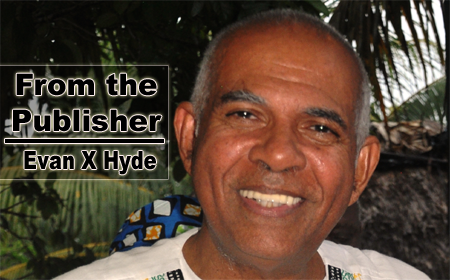In the summer of 1968, at the age of 21, I rushed home to British Honduras with a first degree in English from Dartmouth College in New Hampshire. Remember now, in the United States a first degree is practically meaningless: it is merely the foundation for the student who will go on to do business, law, medicine, and so on at what is called the post-graduate level.
Why did I rush home? Well, I was young, black, and militant in a year when the world was in great uproar. The Seventeen Proposals had been officially introduced just a few months before I came home, and Dr. Martin Luther King, Jr., had been assassinated in Tennessee in early April of 1968; Bobby Kennedy, a former Attorney General of the United States, had been assassinated in June. There were youth and student protests all over the world. America was boiling over, and in my innocent but aggressive mind, I thought Belize would become the most precious, greatest country on planet earth. Serious thing. I was very patriotic.
As I look back over these several decades, I really wonder if my friends in Brooklyn wanted me to come home in 1968. We had all gone to a party the Saturday night before my Sunday morning flight to Miami and Belize, and the American immigration had crashed the joint and frightened undocumented Belizeans into fleeing. That was it for the party. I remember that none of my friends wanted to drive me to the airport the Sunday morning. Whatever, whatever.
This week is the 101st anniversary of an explosive, exceptional incident which took place this week in 1919, an incident which is historically referred to as the Ex-Servicemen’s Riot. I am writing this column because I am sick and tired of these major media systems in Belize which absolutely refuse to document this insurrection when its anniversary occurs each year.
I guess you can’t really blame the executives of the media systems, because they are business people, and they are sensible enough to know that the entrenched Belizean power structure does not want to hear a damned thing about any 1919 insurrection.
Kremandala, as many of you know, came out of a process which became a rebellion in the early 1970s, and it was financed by the nickels, pennies and dimes of the roots people of Belize, the descendants of the same group which overthrew the existing white supremacist power structure of British Honduras in July of 1919.
Leave Lord Michael Ashcroft out of this when you analyze the Belize power structure. He is a relative johnny-come-lately and he is a globetrotter, travelling all over the world to make his money. All Belize is, is a very profitable experiment for him, since 1985.
The real powerhouse of the Belize power structure is very, very shifty and subtle, and it is, when push comes to shove, politically bipartisan. In other words, it doesn’t matter to the real power structure which of the two major political parties we elect to power. If the Cabinet is UDP or if the Cabinet is PUP, the people who really rule Belize do not pay any taxes: humble you and humble I must pay under threat of the government hammer.
The main point of my column today is to remark, in the context of the 1919 insurrection, on how incredibly successful the real power structure in Belize has been in creating and perpetuating the myth that Belize is free of all kinds of racism. The late Emory King did much of the propaganda work here, beginning in the 1950s: he said, classically, “Slavery in Belize was a family affair.” The fact that a clear percentage, albeit a minority, of Belizeans are of mixed ancestry, has played a pivotal role in fomenting the kind of obfuscating confusion which contributes to the myth.
If you want to pinpoint the deadly evil of racism in Belize, what we want to do is examine, closely, the nature of the education system and the structure of sports in Belize. The majority of Belizeans, however, really do not have the expertise or the time to take the insidious education and sports structures apart and look closely at their component parts.
There is a great irony in the fact that it was the Roman Catholic St. John’s College, several years ago, which dared to introduce the teaching of African and Maya history into its curriculum. This Roman Catholic initiative, apparently a highly successful one, has been pointedly ignored by its Anglican and Methodist counterparts.
(If you are tired of hearing me talk about African and Mayan history, you must also be tired of our black youth murdering each other so callously with guns and knives for the last thirty years. No?)
When I first “demanded” the teaching of African and Mayan history in 1969, I was a graduate of St. John’s College and St. John’s College Sixth Form, so that it appeared that my criticisms were all directed at Weber, Zinkle, and the other Jesuits. That is why I said at the beginning of the paragraph that there is a great irony in the fact that the Roman Catholics have led the way. No one has followed.
There is racism in Belize. Get real. It is not for me to continue the struggle. I am an old and tired man. There are forces in play here which are monumental in size and brutality. Perhaps if I had not been so suicidal, I would never have taken on these monsters. But, the fact of the matter is that I did, and every year when the anniversary of the 1919 insurrection takes place in July, I think of my Belizean people and what these forces have done to us. And then I hang my head in shame at those of my people who have sold us out for personal gain. Look around you.
Power to the people.

